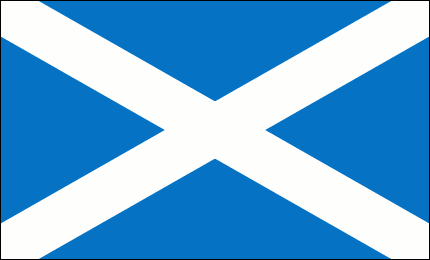The Wyre Catchment Natural Flood Management Project

| Title | The Wyre Catchment Natural Flood Management Project |
| Country/Location | England, UK |
| Size | £2m in revenue payments |
| Revenue Model | Sale of ecosystem services to private and public beneficiaries |
| Private Investment/Finance Structure | £850k nine-year commercial loan, arranged by Triodos Bank UK |
| Public/Philanthropic Investment | £627k grant from the Woodland Trust |
| Env/Social Impact | Reduced Flood Risk Carbon Sequestration Increased Biodiversity Improved Water Quality |
Summary
The Wyre Catchment Natural Flood Management Project will deliver more than 1,000 targeted measures to store, slow and intercept flood water and prevent peak flow in a catchment in England. Beneficiaries of the reduced flood risk are paying for the interventions, and the Project’s Community Interest Company (CIC) has successfully raised a nine-year £850k private loan facility to help fund the interventions. Click here to watch a showcase of the Project that was hosted by GFI Hive and goes into more detail on how it reached a stage of investment readiness.
As climate change accelerates, some countries can expect an increase in coastal and river flooding due to factors such as higher sea levels and increased rainfall. In England, this threat poses significant economic risk, with 1.5 million homes predicted to be in the highest flood risk category by 2050 [1]. For some areas, this risk is already materialising. For example, communities in the Wyre River catchment in North Lancashire have experienced a one-in-50-year flood event four times in the last 20 years. Economic cost to insurers alone of this level of flooding is £1.96m [2].
The Wyre Catchment Natural Flood Management Project (Wyre NFM Project) aims to use nature-based solutions to reduce flood risk in the Wyre River catchment, using a blend of public and private finance. The Project is being led by the Rivers Trust, the Wyre Rivers Trust, Triodos Bank UK, the Environment Agency, United Utilities, Flood Re, Co-Op Insurance and the Esmée Fairbairn Foundation.
Dan Turner, Technical Lead of the Project at the Rivers Trust says: “We know that hard-engineered solutions alone will not address our future flood risk challenges and must be supplemented by natural solutions, but a lack of mechanisms to finance these solutions at scale remains a significant barrier to uptake.”
Discussions on this concept began in 2016 after Storm Desmond flooded hundreds of properties in the Wyre catchment. That year, the Project was launched by a group of partners, including United Utilities, Flood Re, the Environment Agency, and The Rivers Trust. It is one of four pilots initially funded by Defra, the Environment Agency, and the Esmée Fairbairn Foundation as part of the Natural Environment Investment Readiness Fund to trial the possibility of generating revenue streams from ecosystem services.
The Model
Multiple stakeholders are engaged in the transaction structure of the Wyre NFM Project:

Land Managers and Interventions
Firstly, the land managers – predominantly farmers – are responsible for hosting and maintaining the nature-based interventions that help to reduce flood risk. The obligation is in place over a nine-year period, with the potential to extend up to 50 years. The landowners or land managers receive an annual payment for hosting and maintaining the interventions, with the potential for additional payments if certain biodiversity targets are achieved.
The Project has developed a delivery plan of these interventions over 70 hectares, spread across more than 10 land holdings. The interventions include:
- 39 hectares of woodland creation
- 1710 leaky dams
- 42 ponds and scrapes
- 10km of new bunded hedgerows
To make sure these interventions are performing, the Project has set up an ‘adaptive management phase’, with an initial five-year period that allows the interventions to be altered according to their performance data. This phase precedes the start of outcomes-based payments from the beneficiaries in Year Six, giving the Project a period for altering the interventions to optimise performance during peak flow events.
The interventions themselves are installed by the Wyre Rivers Trust and its volunteers. The estimated costs of the Project comprise £1.5 million of capital expenditure, and £50,000 a year in running costs, including the land manager payments and maintenance costs of the interventions.
Beneficiaries
To cover these costs, the Project identified beneficiaries to pay for the ecosystem services that these interventions generate. The five buyers identified were Flood Re, United Utilities, the Environment Agency, Wyre Council and the Northwest Regional Flood and Coastal Committee (RFCC). The buyers pay an annual project fee from Year One to cover the lease payments to land managers. This is conditional on the implementation and maintenance of the interventions. The outcomes-based payments start in Year Six when the performance data, gathered by the Wyre Rivers Trust, verifies the delivery of the ecosystem services.
Natural flood management is the primary ecosystem service being delivered to these buyers. However, the interventions will also deliver other benefits, such as carbon sequestration from woodland planting, water quality improvements from reduced nutrient run-off, and biodiversity improvements from the planting of woodlands and grasslands.
James Airton, Natural Capital Strategy and Planning Manager at United Utilities is one of the buyers within in the project. He says that recognising the other ecosystem services opened the deal out to other buyers and therefore made it more saleable. “People often expect nature-based solutions to be very cheap, which is not always true. However, they often deliver a host of other benefits. As a water company, we must protect our customers’ funding and can only invest in benefits that are core to our responsibility. As such, securing other beneficiaries to pay for some of the broader benefits delivered is key to making these projects deliverable,” says Airton.
United Utilities took part in the modelling process to value the natural flood management benefits. Some 30 sites and assets were predicted to be impacted by the interventions within the area. These included drinking and wastewater treatment works, and network pumping stations. It is estimated that the interventions will deliver a 5-15% reduction in flood impact, with a middle figure of 10% taken for the subsequent modelling.
The Project team expects these interventions to last around 120 years. Taking this into account with the expected frequency of flooding over the 120-year period and historic costs from past flooding, the Project team modelled the financial savings from the reduced flood impact. United Utilities then agreed an annualised payment schedule that captured the value of the natural flood management benefit over this 120-year period.
Airton comments on the strategic importance of this approach: “By using the whole 120-year period, we were able to increase this annual payment figure and improve the financial viability of the Project. Paying for a long-term benefit over such a short timeframe was worth doing in this instance due to the strategic value in demonstrating this alternative funding route.” Airton adds, however, that type of approach is unlikely to be viable in the long term. “It’s therefore key that other beneficiaries for both flood benefit and wider ecosystems services are found, in order to reduce the cost impact on individual organisations. It is also important to note that payments for the natural flood management benefits alone would not have been enough to make this Project viable. Including payments for the other ecosystem services, such as carbon sequestration, was crucial to its success,” he says.
It was estimated that the aggregated value of the ecosystem services being delivered outweighs the cost of creating and maintaining these interventions several times over. A total of £2m in ecosystem service payments is scheduled over the nine-year period.
Wyre Catchment CIC
To create a legal structure that had independence and removed risk from the Rivers Trust and Wyre Rivers Trust, the Project team established a not-for-profit Special Purpose Vehicle (SPV), The Wyre Catchment Community Interest Company (CIC). It acts as the legal entity through which capital flows for the Wyre NFM Project – including the aggregation of payments across buyers. Once the ecosystem services were modelled and the buyers and sellers were engaged, the Wyre Catchment CIC sourced external investment to provide the upfront capital and manage risk.
Investors
To cover the £1.5m of up-front costs, a mix of public and private funding was used.
Grants of £627,500 were issued for tree planting and hedgerow creation from the Woodland Trust via the Northern Forests Grow Back Greener programme, as part of Defra’s Nature for Climate Fund. These grants will be issued over the first three years of the Project. Private investment for the remaining £850,000 was agreed in the form of a nine-year loan. The loan is split into two complementary facilities that bring nine investors together.
The first tranche of investment is the ‘Institutional Loan Facility’ that holds £650,000 from five impact investment funds. The first and largest contribution came from the Esmée Fairbairn Social Investment Fund, which originally issued grants to the Project at its pilot stage and helped to bring in the other four fund investors.
Dan Hird, Principal and Founder of Nature Finance, comments: “In the impact investment market, many of the investors work collaboratively and are happy to share investment opportunities, learnings, and due diligence findings.”
The funds also have representation at the Wyre CIC Board. The interest rate is set at 6%, and the impact investors have agreed to an ‘incentive reduction’ in the interest rate of 1% if the interventions deliver certain biodiversity targets, with part of these savings passed onto the land managers.
The second tranche is the ‘SITR Loan Facility’ and holds £200,000 from four high-net-worth individuals, who each contributed £50,000 and were introduced to the project by Triodos Bank UK. The facility ranks junior to the Institutional Loan Facility and effectively functions as equity with a 6% return. However, the investors benefited from Social Investment Tax Relief (SITR), which was launched in 2014 for the social impact sector and offers a 30% tax refund on any qualifying investment. The Wyre NFM Project was the first nature-based investment project to qualify for SITR. However, as of April 2023, the SITR scheme has ended.
Together, the two tranches offer £850,000 with the funds drawn down over three years and repayments due in Years Four to Nine.
Risk Sharing
The external investment provides key risk-sharing features for the four stakeholder groups of the Project: the buyers, landowners, investors, and the charities (Rivers Trust and Wyre Rivers Trust).
Financial risk primarily rests with the investors. Some 80% of the interventions must be delivered by the end of Year Three, and if these are not delivered, the buyers have the option of reviewing contracts in Year Four, leaving the investors with no capital or interest repayments. Buyers carry less financial risk as they pay an annual project fee, meaning they would have paid fees for the first three years if they decided to exit on Year Four.
Performance risk of the interventions rests with both the buyers and investors. Up to Year Six of the Project, performance data is gathered on the interventions, which can be altered using the adapted management phase. At Year Six, if this performance data reveals that the ecosystem services have not been delivered as expected, the buyers then pay a reduced fee, and investors would again face a loss of capital from this.
Reputational risk primarily rests with the Rivers Trust and Wyre Rivers Trust, as they have been leading the project and are responsible for the implementation and measurement of the interventions. However, they carry no financial or performance risk.
The landowners similarly carry no financial, reputational or performance risk, which the Project team says was important for their agreement.
Measurement and Outcomes
Flood risk reduction is the main ecosystem service being targeted in the Project. With the interventions put in place, the performance metrics to measure their efficacy are divided into two broader categories:
- The practical function of the interventions as designed. For example, storing water during smaller flooding events
- The perceived reduction or delay in peak water flow delivering flood risk reduction during major flood events.
Measurement of the performance data will be undertaken post-weather events by the Wyre Rivers Trust, which will use various equipment, including flumes, level loggers and timelapse photography. This will inform annual and project reporting on effectiveness of the interventions at reducing peak flow during a one-in-50-year flood event. It will also build an evidence base for natural flood management projects in other areas. The monitoring will take place in two small sub-catchments as a proxy for the wider area. Some interventions are predicted to reduce peak flow by up to 20%.
Site visits will also be conducted annually to check that the interventions are being maintained and working well otherwise.
Tom Myerscough, General Manager of the Wyre Rivers Trust, comments on the benefits of continuing to work with land managers directly during the maintenance and long-term planning stage. “By keeping them engaged, we maintain access to their significant knowledge of the area, keep eyes on the ground and receive anecdotal evidence on how the interventions are performing,” says Myerscough.
If the performance targets are not met in Years One to Five, the adapted management phase will be triggered. If they are not met in Years Six to Nine, a contract review process will be triggered.
For the other targeted outcomes of the Project, several different measurement frameworks are being used. For carbon sequestration, the team will use the Woodland Carbon Code, for nutrient reduction it will use the Replenish Tool, and for biodiversity uplift it will use a custom-built biodiversity measurement framework that was co-developed with the UK Government Department of Environment, Food and Rural Affairs (Defra). The latter is linked to an ‘impact adjusted’ finance mechanism with the institutional investors, whereupon if a biodiversity metric is met, the investors will receive a reduced interest rate.
Challenges
This Project is the first of its kind in the UK to use private finance for natural flood management measures, including the use of private investment. As such, there were understandably a number of challenges.
For example, the methodology behind the modelling and monetisation of natural flood management techniques is nascent, compared to more traditional ‘grey’ infrastructure. The Project team used an open book approach for the modelling, and a range of data from different sources, including the Met Office, the Environment Agency, and United Utilities. Inputs from buyers were needed to create a model that all stakeholders were comfortable with.
Engaging the land managers and local community also required significant consideration. Firstly, a large amount of upper Wyre farms have existing land obligations, such as commitments within the Countryside Stewardship scheme, which posed difficulties when it came to agreeing the delivery of interventions in certain places. Farmers also considered the possibility of being excluded from the future Environmental Land Management Schemes (ELMS) if they hosted these interventions before the ELMS launched.
The Wyre NFM project used several measures to address these issues. Notably, Defra agreed to cover any differences in payments to land managers between the NFM project and potential ELMS activity for certain interventions as part of the project. The Wyre NFM team also engaged regularly with the farmers to engender a sense of confidence and ownership in the interventions. This included emphasising the possibility of diversifying income streams, such as carbon revenue, and working with farming cluster groups to show the interventions’ importance for the catchment.
From an investment perspective, the size and uniqueness of the Project also posed limitations. For example, the team approached larger institutional investors, but the investment size was too small for their appetite. Conversely, Triodos previously had experience with arranging retail bonds for nature-based projects, but the lack of precedent in the natural flood management space made the Project too risky for retail investors. The impact investment funds and high-net-worth individuals, however, were recognised as two investor groups who valued the environmental benefits of the Project and were happy to undertake their own due diligence, which allowed for sufficient investment while keeping transaction costs low.
What comes next?
The Wyre NFM Project team is now applying the learnings from this model to develop projects in other locations. The team notes however that each catchment is unique and will have its own requirements in implementing and financing natural flood management interventions.
Other project developers are also learning from the Wyre River NFM Project. One example is the Ribble Rivers Trust, which received a £100,000 technical assistance grant from the Natural Environment Investment Readiness Fund in its second round of funding. The Ribble Rivers Trust is developing an investment plan for ecosystem services in the River Ribble catchment. Actions including soil nutrient management, building leaky dams, woodland creation and hedgerow restoration will all be costed. Benefits such as natural flood management and water quality improvements will also be quantified.
Sources
- ‘Climate change puts 300,000 British homes at high risk of flooding and sinkholes’, Melissa Lawford, The Telegraph, November 2021
- Showcase of the Wyre River Natural Flood Management Project, GFI Hive, 2022




